RIO BRAVO (1959)
A small-town sheriff enlists the help of a disabled man, a drunk, and a young gunfighter in his efforts to hold in jail the brother of the local bad guy.
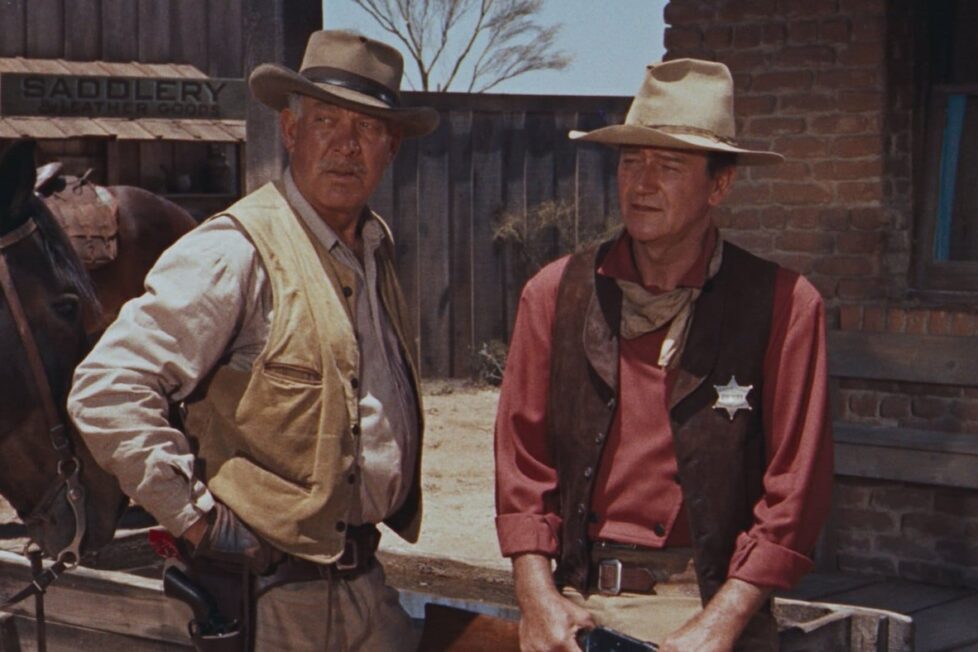
A small-town sheriff enlists the help of a disabled man, a drunk, and a young gunfighter in his efforts to hold in jail the brother of the local bad guy.


The Western is a genre that’s undergone more transformations than any other, incorporating a multitude of themes and motifs along the way. It’s become such a staple of cinema that its iconography is easily transmuted. Sets, props, costumes, and characters all form a visual language that can be readily manipulated to suit the film’s message.
As a result, the Western’s been reimagined and reinterpreted countless times. It’s been lampooned in the likes of Blazing Saddles (1974) and reinvigorated by Unforgiven (1992). But then, what exactly is the quintessential Western? What model are these movies drawing on? Which film provides the template for the genre, the mould from which a plethora of imitators would be formed? While there are a few strong contenders, you could do no wrong by selecting Rio Bravo.
Howard Hawks’s slow, laid-back Western is one of the best films of his illustrious career. It’s also one of the greatest Westerns ever made—most pundits would put it in their Top 10, I reckon—and it’s clear to see why. All the imagery you associate with the genre is on display, along with the traditional plotline of a battle between good and evil, the just and the unjust, the righteous and the villainous. However, what makes Hawks’s Rio Bravo so unique despite the textbook formula is that the plot becomes secondary to the characters it contains, making it a singular entry in the Western format.
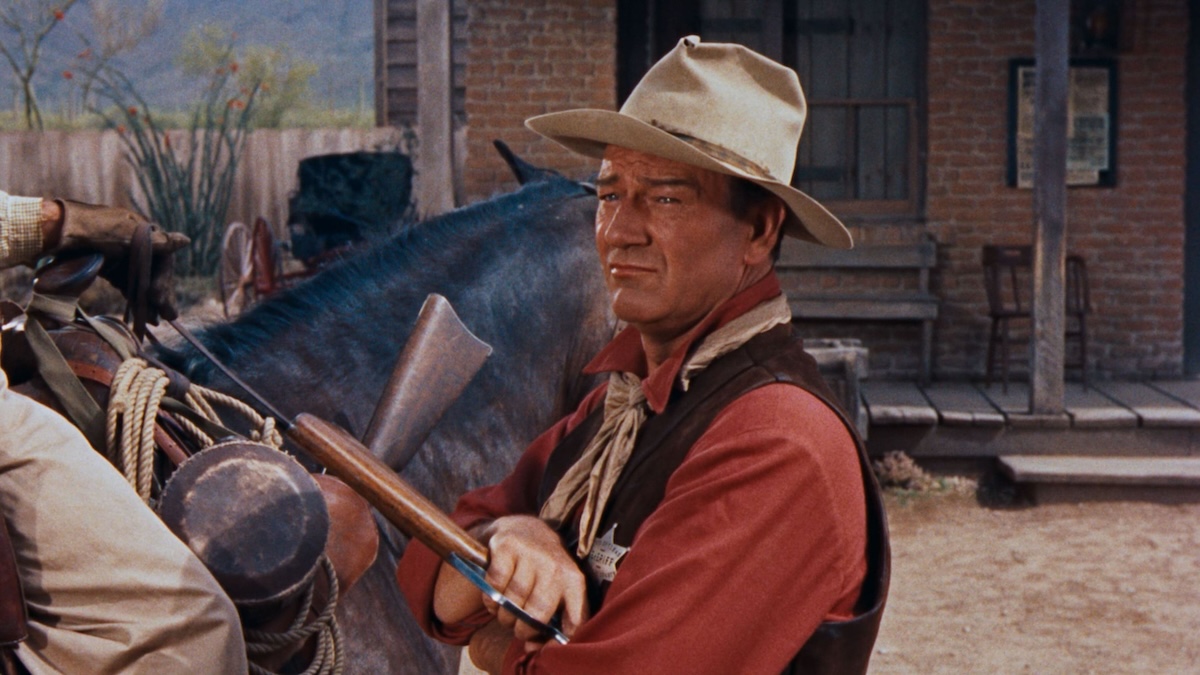
The plot is so straightforward that you’ll wonder how the film manages to be almost two and a half hours long. Sheriff John T. Chance (John Wayne) must prevent a murderer from being broken out of jail by the powerful rancher Nathan Burdett (John Russell). As Burdett uses his wealth to recruit hordes of cronies to free his brother Joe (Claude Atkins), Chance gathers around him the few allies he can trust: the recovering alcoholic Dude (Dean Martin), the limping Stumpy (Walter Brennan), the young, gung-ho Colorado (Ricky Nelson), and the courageous Feathers (Angie Dickinson).
Of course, what gives Hawks’s film its meandering, lazy pacing is that the film isn’t really about the plot in the first place. It’s a character-driven story, and as a result, it becomes more enjoyable with subsequent viewings. We get to know about the Dude’s sad, alcohol-soaked backstory. We gain an insight into Feathers’s history and her struggle to overcome her past. And John Wayne is John Wayne, because when isn’t he?
Rio Bravo marked Wayne’s return to the Western after he had vowed to explore other genres, much to the disapproval of audiences. Following a string of disappointing box office results for his films made after The Searchers (1956), “Duke” decided a return to form was necessary to regain public favour. Needless to say, it was successful: while the box office success was modest, it delivered precisely what viewers craved.
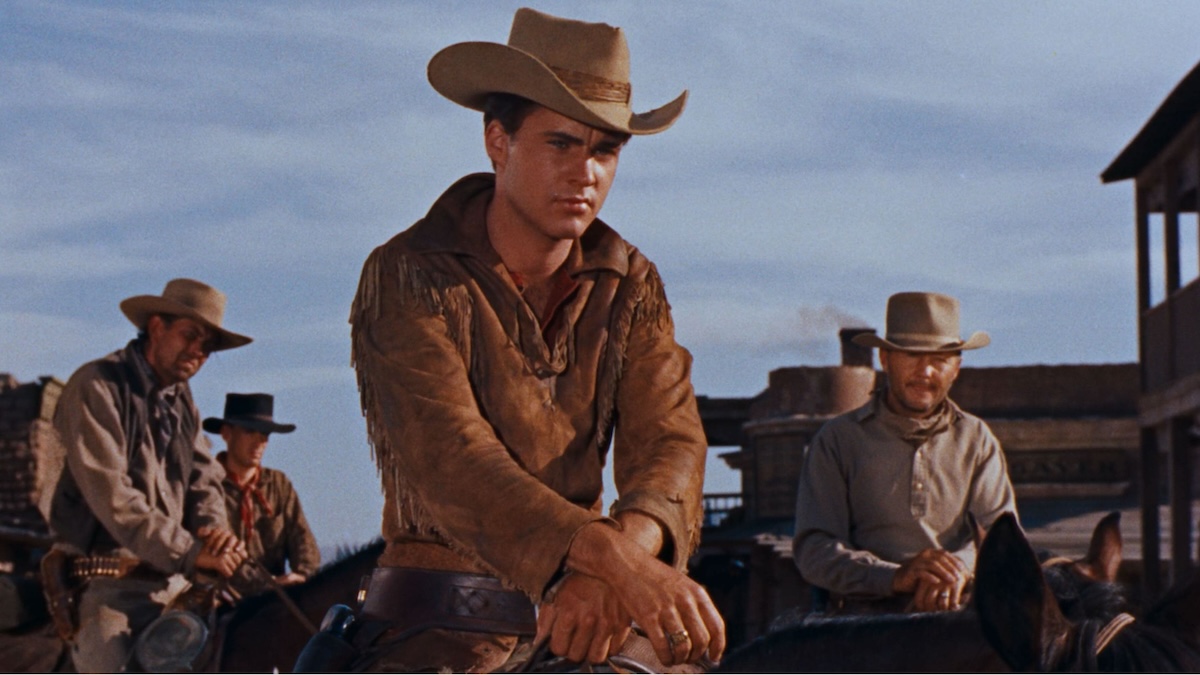
Rio Bravo also served as a rather petty riposte to Fred Zinnemann’s High Noon (1952), which both Wayne and Hawks loathed for being resolutely un-American. Specifically, the pair disliked the portrayal of Marshal Will Kane (Gary Cooper) as spineless and cowardly. After all, Kane does ask for help, which of course is an unforgivably shameful act for a man. Fortunately, the American public was rescued from such ungodly depictions of masculinity from the terse, basically emotionless Chance, who refuses help from nearly anyone who seeks to give it. The result is a stock performance from Wayne, though he adequately performs what the script demands of him.
Luckily, he’s assisted by the performances around him. Dean Martin, already famous nationwide as the inimitably suave crooner and a member of the Rat Pack, delivers a surprisingly compelling performance as Dude, a recovering alcoholic with a broken heart. His redemption story provides most of the film’s soul. Walter Brennan, though largely unintelligible, acts the part of the lovable, steadfast sidekick, adding a touch of realism to the jailhouse scenes.
Angie Dickinson’s performance in Rio Bravo demands your attention. It’s a shame, then, that this was arguably the pinnacle of her career. Her acting is surprisingly poignant in some scenes, particularly because she seamlessly conveys emotions in a film otherwise lacking in them. She appears completely at ease alongside the film’s big names, making her performance all the more laudable.
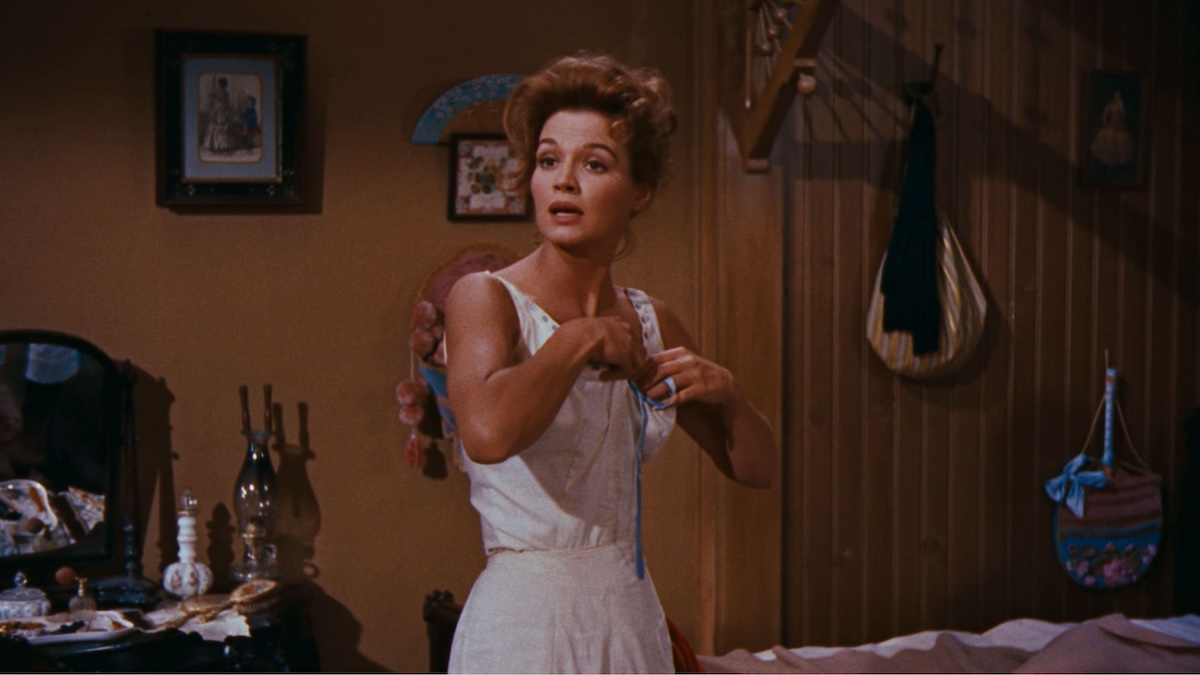
Through no fault of her own, she also finds herself entangled in what is arguably the weakest storyline in the film: her romance with Sheriff Chance. While Wayne and Dickinson do have good on-screen chemistry, they might have been even better suited if Wayne had been a decade younger. The age difference between the pair—Wayne’s 52 to Dickinson’s 26—isn’t necessarily unpleasant, but it certainly is distracting in some scenes. Even Wayne himself thought he was too old to play a love interest, let alone opposite someone who’s literally half his age.
If I could make one change to the film, it would be to swap out Sheriff Chance’s role in the love story for Dude. Firstly, Martin and Linda were much closer in age. But perhaps more importantly, such an amendment to the narrative would arguably have provided the story with more heart. Dude would both get a second chance at love and a reason to sober up, while Feathers could have had a more active role in the story, simultaneously being the world-weary heroine trying to outrun her past and Dude’s empathetic, sagacious sponsor.
Alas, this was not to be. Taking the plot in this direction would likely have rendered Wayne’s presence superfluous, which would have been a major problem. He was, after all, the sole reason the film was being made. When Hawks approached studios with a character-driven Western lacking a prominent plot, all of them immediately refused. However, the moment Hawks mentioned Wayne starring in the lead role, the money taps were turned back on.
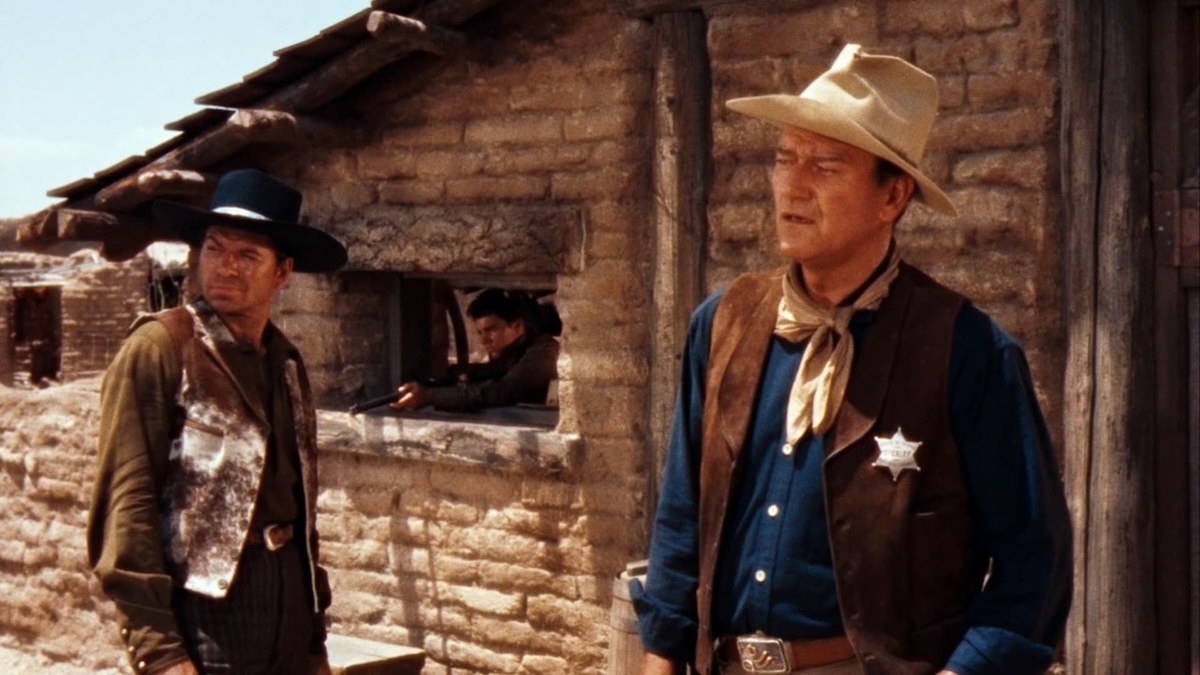
Much like Ford’s Stagecoach (1939), released two decades prior, there’s the unfortunate issue of stereotyping, though it’s not quite as egregious as in Ford’s ground-breaking Western. Pedro Gonzalez Gonzalez’s performance as Carlos Robante has subsequently been criticised as being an insensitive depiction of Hispanic men. However, film history is filled with such caricatures, which you’re just going to have to pardon if you still want to appreciate the merits of older films.
Though the final shootout is a highlight (despite it being rather predictable, it always works), my favourite scene in the film is probably the impromptu sing-song in the jailhouse. Here, both Martin and teenage heartthrob Ricky Nelson demonstrate why they’re singers first and actors second. Martin’s voice is haunting, transporting you back to a bygone era you never experienced—though he’ll almost certainly convince you that, once upon a time, you too lived a hard-fought life on the dusty Western trail—and the whole scene has an aura of familiarity to it, like these are your long-lost friends whom you haven’t seen in many years.
This is very easily the greatest strength of Hawks’ film: it creates a vivid portrait of life. Not just one lived in a rugged, Texan landscape, but one that is characterised by uphill battles, challenging, yet rewarding friendships, and romances plagued by uncertainty, both past and present. Hawks and the talented cast provide blissful escapism, inviting you into their world and never rushing you along the way.
USA | 1959 | 142 MINUTES | 1.85:1 | COLOUR | ENGLISH

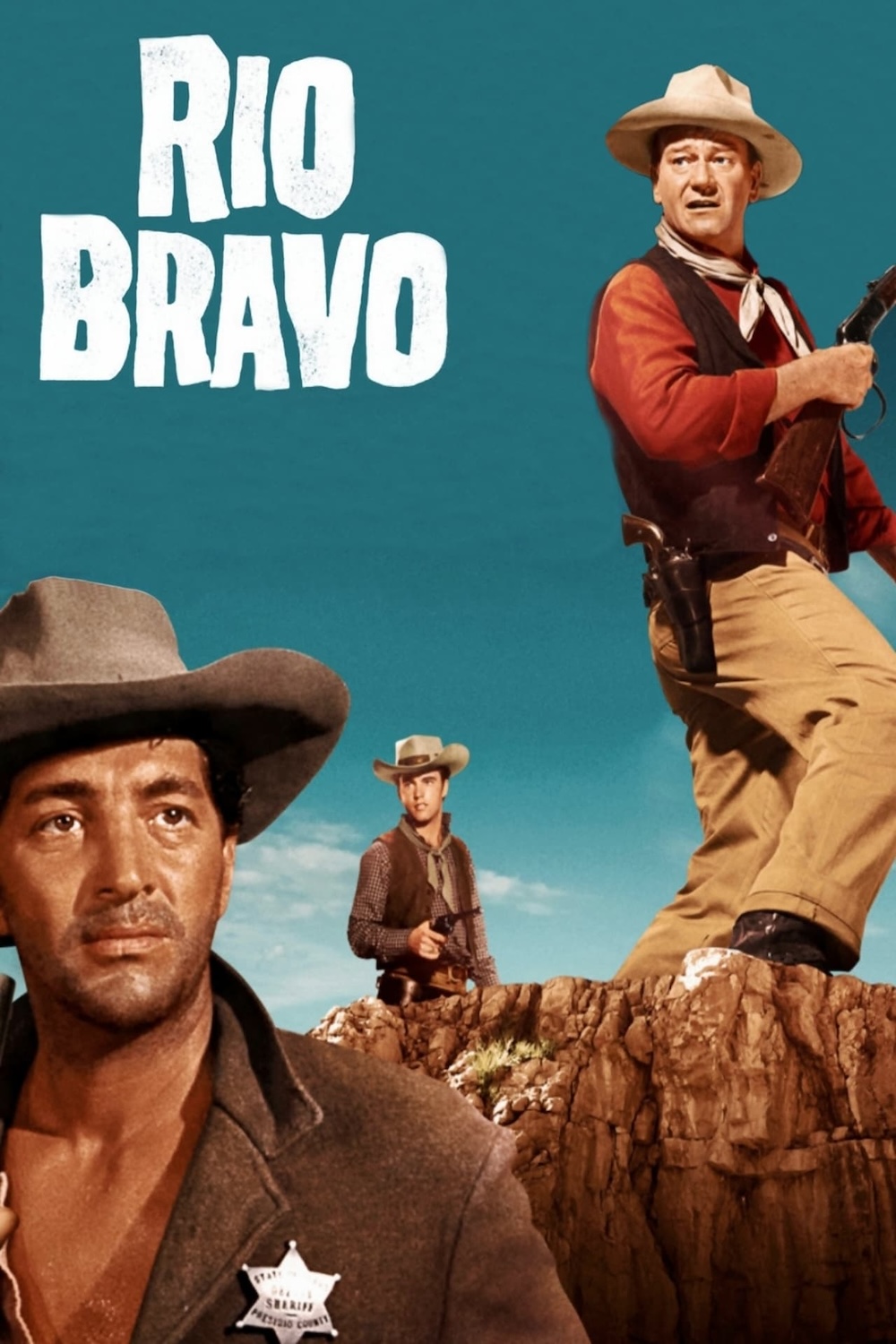
director: Howard Hawks.
writers: Jules Furthman & Leigh Brackett (based on the short story by B.H Campbell).
starring: John Wayne, Dean Martin, Ricky Nelson, Angie Dickinson, Walter Brennan, Ward Bond, John Russell, Pedro Gonzalez Gonzalez & Estelita Rodriguez.
